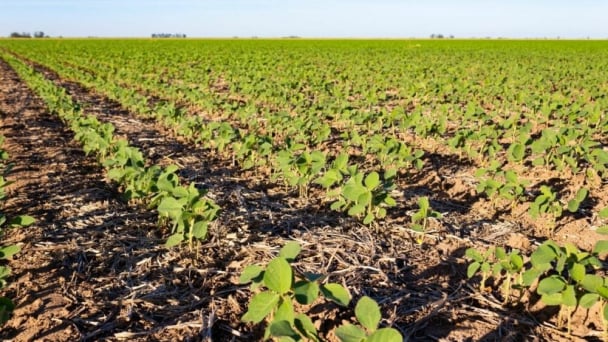May 18, 2025 | 06:10 GMT +7
May 18, 2025 | 06:10 GMT +7
Hotline: 0913.378.918
May 18, 2025 | 06:10 GMT +7
Hotline: 0913.378.918
What other countries might consider excess inventory is China’s exact intent. Beijing maintains hefty stocks of wheat and rice in order to ensure food security for 1.4 billion people, and production of the grains has recently hovered near all-time highs, encouraged by set purchase prices.
Chinese corn prices began to surge last year, topping those for wheat for the first time since Beijing scrapped the price support and stockpiling schemes for corn, roughly five years ago. Domestic wheat prices are now offered at some of the largest-ever discounts to the yellow grain.
That is expected to increase wheat feeding in the coming months as the country works to restore pork production, but it seems unlikely that Beijing would tolerate any strong depletion of wheat reserves given the purpose they are intended to serve.
Part of the overhaul of China’s crippled pork industry following the 2018 onslaught of African swine fever was the elimination of using food waste for feed, which was estimated at 30 million tonnes by a member of the U.S. Grains Council during the U.S. Department of Agriculture’s outlook forum last month.
That raises demand for feed grains to an even larger degree than the hog herd recovery alone. The potential threat to wheat and rice reserves also seemingly favors more imports of other feed ingredients, such as U.S. corn, though there has been little movement on that front in over a month.
USDA’s estimates suggest China’s wheat carryout peaked in 2019-20 at 151.7 million tonnes, representing about 435 days of use. The agency on Tuesday cut 2020-21 ending stocks to 150.4 million tonnes, a reduction of 4.5 million from last month’s estimate and down nearly 14 million from the October forecast.
That caused an unexpected drop in world wheat supply projections, though supplies outside of China rose 1.5 million from last month’s figure, largely on a production boost in Australia. China’s predicted 2020-21 carryout now reflects 376 days of use.
USDA has drastically raised 2020-21 Chinese wheat feeding assumptions over the last year. That forecast started out last May at 20 million tonnes, the same as two years ago but slightly more than the recent average. That was set to account for 15% of total wheat usage, a typical portion.
But USDA on Tuesday jacked wheat usage for feed up to 35 million tonnes from 30 million last month and 25 million in January. That would be a record volume of wheat feeding, and it would also account for a record share of all wheat usage at 24%.
Only a small amount of China’s wheat needs will be met by imports, though USDA has bumped up its 2020-21 import projection in seven consecutive reports. That is now set to reach a 25-year high of 10.5 million tonnes, up from the initial prediction of 6 million.
China was barely a top 10 corn importer just a couple years ago, but it should easily top that list in 2020-21 amid shrinking domestic supplies and record-high prices. The record-high prices are easy to see, but the stockpile situation is a black box. No one in the industry knows China’s exact supply levels, whether they have substantially fallen, or why that would be.
But USDA’s numbers simply do not jibe with the prices. Since Beijing cut corn supports, USDA shows that stocks-to-use has fallen a few percentage points each year since 2015-16’s 93%, and it is set to hit 68% in 2020-21, a seven-year low.
Most-active Chinese corn futures in late 2020 rose more than 40% above the levels from a year earlier, and that followed increases of just 3% in the previous two years.
USDA’s balance sheet alone offers zero insight into how prices could have skyrocketed since overall stocks are still seen close to 200 million tonnes and not hugely changed year-on-year. That would surely suggest there are enough supplies to shift even more corn into feeding if needed as not to take away from wheat.
Imports should clearly be favorable since they are significantly cheaper than domestic supplies. China has barely purchased any U.S. corn since the staggering 5.85 million tonnes it snatched up in just four days at the end of January, though it has bought at least 18.7 million tonnes for delivery in 2020-21.
Beijing has expressed the need to diversify its suppliers, and there is some untapped potential in South America. Official export data out of Brazil shows that the No. 2 corn exporter has not shipped more than a cargo’s worth of the yellow grain to China since 2016, and the Asian country is also not on Argentina’s list of customers.
Australia was blessed with a bumper grain harvest in 2020-21 following a string of disaster drought years, further increasing China’s options. Solving the trade dispute with the Aussies, either permanently or temporarily, seems like an easy route for Beijing to pursue if the supply situation is truly dire.
(Reuters)

(VAN) Fourth most important food crop in peril as Latin America and Caribbean suffer from slow-onset climate disaster.

(VAN) Shifting market dynamics and the noise around new legislation has propelled Trouw Nutrition’s research around early life nutrition in poultry. Today, it continues to be a key area of research.

(VAN) India is concerned about its food security and the livelihoods of its farmers if more US food imports are allowed.

(VAN) FAO's Director-General emphasises the need to work together to transform agrifood systems.

(VAN) Europe is facing its worst outbreak of foot-and-mouth since the start of the century.

(VAN) The central authorities, in early April, released a 10-year plan for rural vitalization.

(VAN) Viterra marked a significant milestone in its carbon measurement program in Argentina, called Ígaris, reaching 1 million soybean hectares measured.